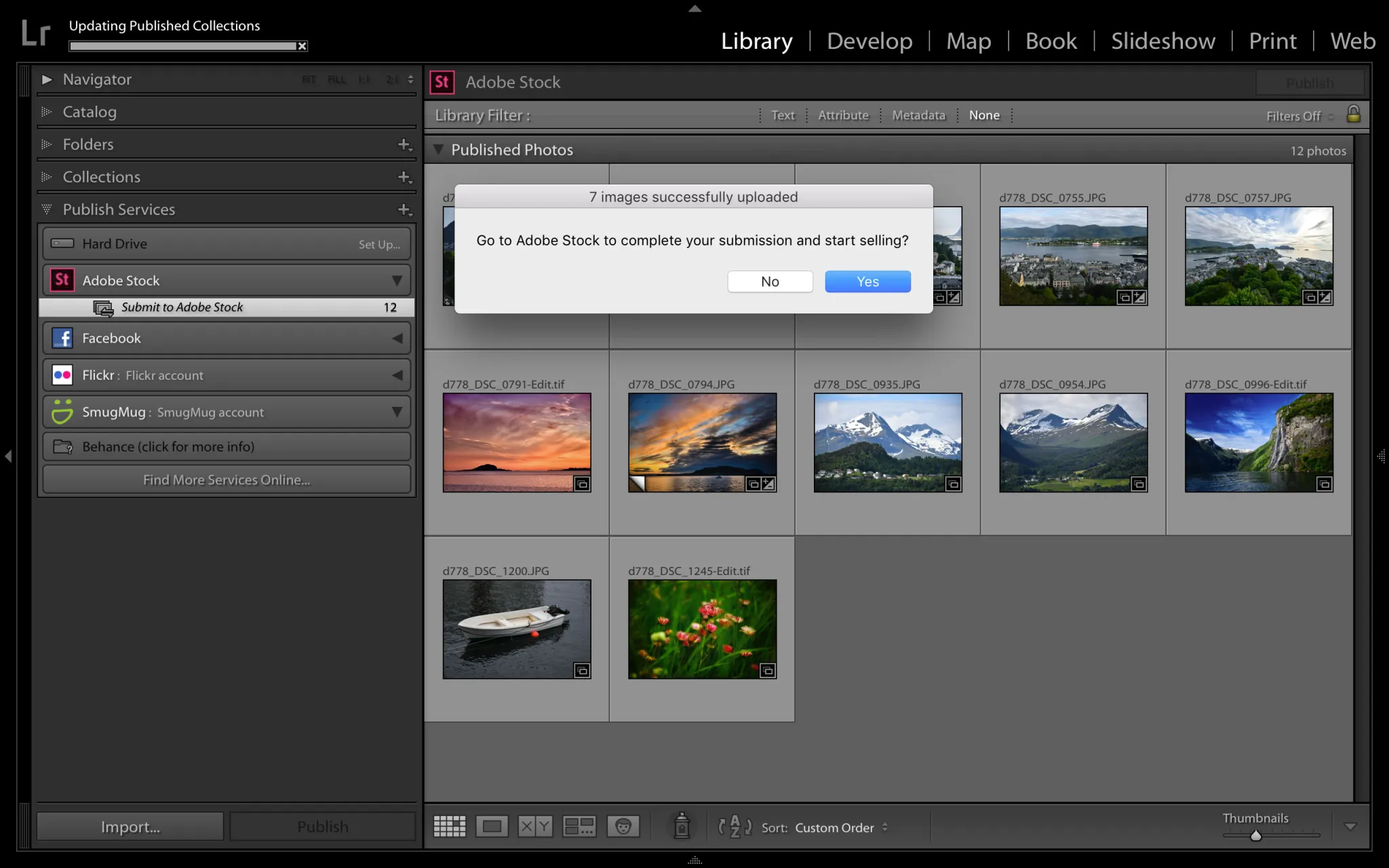1. Introduction
In the dynamic world of creative content, the significance of high-quality images cannot be overstated. As a premier platform for buying and selling stock images, Adobe Stock plays a pivotal role in the creative industry. Central to maintaining its reputation is a commitment to stringent image quality standards.This blog post delves into the intricacies of Adobe Stock's Image Quality Guidelines, exploring technical specifications, visual aesthetics, lighting, focus, and more. By understanding and adhering to these guidelines, contributors can ensure their images not only meet customer needs but also elevate the overall standard of imagery in the digital realm.Also Read This: How to Change Dress Color in Photoshop 7.0
2. Understanding Adobe Stock Image Requirements
 When it comes to contributing images to Adobe Stock, comprehending and adhering to the platform's specific image requirements is paramount. These guidelines ensure that images are not only visually appealing but also technically proficient, catering to the diverse needs of creative professionals worldwide.1. Technical Specifications: Images submitted to Adobe Stock must meet certain technical standards to ensure optimal quality. These specifications include resolution, format, and size. Typically, images should have a minimum resolution of 4 megapixels, be in JPEG format, and have a file size that's both manageable for uploading and retains the necessary details for high-quality reproduction.2. Image Title and Description: Each image should be accompanied by a clear and relevant title and description. These elements provide context to potential buyers and improve the discoverability of the image through search engines and within Adobe Stock's platform. It's essential to choose accurate keywords and descriptions that reflect the image's subject matter accurately.3. Metadata Requirements: In addition to titles and descriptions, images require appropriate metadata, including relevant keywords and categories. Properly chosen keywords enhance discoverability and ensure that your images reach the right audience. Selecting accurate categories further aids buyers in finding the most suitable images for their projects.By mastering these foundational aspects of Adobe Stock's image requirements, contributors can pave the way for their images to be not only accepted but also valued by customers seeking top-quality visuals for their creative endeavors.
When it comes to contributing images to Adobe Stock, comprehending and adhering to the platform's specific image requirements is paramount. These guidelines ensure that images are not only visually appealing but also technically proficient, catering to the diverse needs of creative professionals worldwide.1. Technical Specifications: Images submitted to Adobe Stock must meet certain technical standards to ensure optimal quality. These specifications include resolution, format, and size. Typically, images should have a minimum resolution of 4 megapixels, be in JPEG format, and have a file size that's both manageable for uploading and retains the necessary details for high-quality reproduction.2. Image Title and Description: Each image should be accompanied by a clear and relevant title and description. These elements provide context to potential buyers and improve the discoverability of the image through search engines and within Adobe Stock's platform. It's essential to choose accurate keywords and descriptions that reflect the image's subject matter accurately.3. Metadata Requirements: In addition to titles and descriptions, images require appropriate metadata, including relevant keywords and categories. Properly chosen keywords enhance discoverability and ensure that your images reach the right audience. Selecting accurate categories further aids buyers in finding the most suitable images for their projects.By mastering these foundational aspects of Adobe Stock's image requirements, contributors can pave the way for their images to be not only accepted but also valued by customers seeking top-quality visuals for their creative endeavors.Also Read This: how many numbers can you see in this image
3. Visual Composition and Aesthetics
Crafting captivating and visually appealing images goes beyond technical specifications; it involves mastering the art of visual composition and aesthetics. Adobe Stock places a strong emphasis on these aspects, recognizing that a well-composed image is more likely to resonate with buyers and convey its intended message effectively.1. Balanced Composition: A balanced composition creates a harmonious visual experience. Familiarize yourself with the rule of thirds, where the frame is divided into nine equal parts by two equally spaced horizontal and vertical lines. Positioning key elements along these lines or at their intersections can enhance the overall composition.2. Framing and Visual Hierarchy: Effective framing directs the viewer's attention to the main subject of the image. Consider how different elements within the frame interact and contribute to the overall narrative. Establish a clear visual hierarchy by ensuring the main subject stands out prominently, guiding the viewer's gaze.3. Negative Space and Symmetry: Negative space, the area surrounding the subject, can add depth and elegance to an image. Employing symmetry or asymmetry purposefully can create a sense of balance and intrigue. Experiment with different compositions to find what best suits your subject and concept.4. Leading Lines and Diagonals: Utilize natural or implied lines to guide the viewer's eye through the image. Diagonal lines, for example, can introduce a dynamic energy, while horizontal lines convey calm and stability. Leading lines can draw attention to the subject, creating a strong visual connection.5. Framing Within the Frame: Using elements within the scene to frame your subject can add layers of interest. An object in the foreground, such as a window or foliage, can create a sense of depth and context, adding to the narrative quality of the image.6. Color and Contrast: Color choices can evoke emotions and set the tone for an image. Experiment with complementary or contrasting colors to make subjects pop or convey a specific mood. Pay attention to color balance and ensure hues are consistent and realistic.7. Visual Consistency: Maintaining a consistent style across your portfolio helps establish your visual identity. Consider your preferred color palette, lighting choices, and overall aesthetic, as this consistency can attract a dedicated audience and strengthen your brand as a contributor.By mastering these principles of visual composition and aesthetics, you can create images that not only meet Adobe Stock's high standards but also resonate deeply with viewers, making them more likely to be chosen by buyers for their creative projects.Also Read This: Tips for Selling Your Photos to Getty Images and Earning Income
4. Lighting and Exposure
Lighting and exposure play pivotal roles in the creation of high-quality images, impacting their visual appeal and overall effectiveness. Adobe Stock places a strong emphasis on understanding and mastering these aspects to ensure your images meet the platform's quality guidelines.| Aspect | Description |
|---|---|
| 1. Natural Lighting | Utilize natural light for stunning results. "Golden hour" during sunrise and sunset offers soft, warm light enhancing mood. Avoid harsh midday sun causing shadows and washed-out colors. |
| 2. Artificial Lighting | Complement scenes with suitable artificial lighting, avoiding color casts or reflections. Experiment with setups for desired atmosphere and mood. |
| 3. Exposure Control | Proper exposure is vital. Avoid overexposure (blown highlights) and underexposure (shadow loss). Use histogram, exposure compensation settings, for correct exposure. |
| 4. Dynamic Range | Capture details in high contrast scenes. HDR photography or exposure bracketing helps preserve wide tonal range between bright and dark areas. |
| 5. Backlighting and Silhouettes | Backlighting creates striking effects, like silhouettes. Ensure subject visibility despite light source. |
| 6. Flash and Fill Light | Flash or fill light balances exposure in challenging conditions. Avoid harsh shadows or overexposing subjects. |
| 7. White Balance | Adjust white balance for accurate colors. Correct setting according to lighting conditions (daylight, cloudy, tungsten) ensures natural color representation. |
| 8. Experimentation and Adaptation | Experiment with lighting scenarios, adapt to changing conditions. Revisit locations at different times to capture varying lighting effects. |
Also Read This: How to Embed Images in Canvas
5. Focus and Sharpness؎
Achieving optimal focus and sharpness in your images is crucial for capturing the fine details and conveying a sense of clarity and professionalism. Adobe Stock places a high value on images that exhibit sharpness and accurate focus, as these qualities enhance the overall quality of the visual content.1. Selecting the Right Focus Point: Choose a focus point that aligns with the main subject of your image. Using the center focus point isn't always the best option; consider using other focus points or manual focus for more control.2. Depth of Field: Understand how aperture affects depth of field. A wide aperture (low f-number) creates a shallow depth of field, with a focused subject against a blurred background. A narrow aperture (high f-number) increases depth of field, keeping more of the scene in focus.3. Manual Focus: In situations where autofocus struggles, such as low-light conditions or when the subject lacks contrast, consider switching to manual focus. This gives you precise control over where the focus lands.4. Tripod Use: Using a tripod can eliminate camera shake, ensuring sharpness, especially in low-light situations or when using slow shutter speeds.5. Motion Blur: Avoid unintentional motion blur caused by camera shake or subject movement. Use a fast enough shutter speed to freeze motion, and consider using image stabilization or a tripod.6. Post-Processing Sharpness: Fine-tuning sharpness in post-processing can enhance image quality. Be cautious not to over-sharpen, which can lead to unnatural-looking images with artifacts.7. Lens Quality: The quality of your lens can impact image sharpness. Invest in high-quality lenses that are capable of resolving fine details.8. Testing and Experimentation: Test different camera settings, focal lengths, and shooting techniques to understand how they affect focus and sharpness in various scenarios.By mastering the techniques for achieving focus and sharpness, you can ensure that your images not only meet Adobe Stock's quality standards but also stand out as clear, crisp, and visually appealing pieces of content that captivate viewers.Also Read This: How to View Public Profiles on Adobe Stock
6. Color Accuracy and White Balance
Color accuracy and proper white balance are fundamental aspects of image quality, crucial for conveying the intended mood and message of your visuals. Adobe Stock emphasizes the importance of maintaining accurate colors and white balance to ensure that your images resonate with viewers and meet the platform's quality guidelines.1. Color Accuracy: Accurate colors are essential for creating images that look natural and engaging. Ensure that the colors you capture are faithful to the scene. Avoid oversaturating or desaturating colors excessively, as this can result in unrealistic or unbalanced visuals.2. White Balance: White balance determines the overall color temperature of your image. Setting the correct white balance ensures that whites appear truly white, and other colors are represented accurately. Different lighting conditions require different white balance settings (e.g., daylight, tungsten, fluorescent).3. Custom White Balance: In situations with challenging lighting, use custom white balance settings to achieve accurate colors. This involves setting a reference white point based on the lighting conditions.4. Post-Processing Adjustments: If the white balance isn't perfect in-camera, you can adjust it during post-processing. Many editing tools provide white balance adjustments to fine-tune the color temperature and tint of your images.5. Color Casts: Be vigilant about color casts, which occur when certain colors dominate the image due to lighting conditions. Correct color casts to achieve a more balanced and realistic appearance.6. Raw vs. JPEG: Working with raw files offers more flexibility in adjusting white balance during post-processing. Raw files retain more data, enabling you to correct white balance without compromising image quality.7. Consistency: Maintain consistency in color tones and white balance across a series of images, especially if they're meant to be used together in a project.8. Creative Use of White Balance: While accurate white balance is essential in many cases, creative deviations can be used deliberately to evoke a specific mood. For example, using a cooler white balance for a nostalgic, vintage feel.9. Monitor Calibration: Ensure that your monitor is properly calibrated to display colors accurately. This step helps you make accurate color and white balance adjustments during post-processing.By prioritizing color accuracy and white balance, you can produce images that not only meet Adobe Stock's quality standards but also effectively communicate your artistic vision, connecting with viewers on an emotional level.Also Read This: Adding Creative Flair to Your Portfolio with GIFs on Behance
7. Noise and Artifacts
Minimizing noise and digital artifacts in your images is crucial for maintaining their overall quality and professionalism. Adobe Stock places a strong emphasis on images that are free from distracting noise and artifacts, ensuring that your visuals meet the platform's stringent quality standards.1. Understanding Noise: Noise is the random variation of brightness or color information in images. It's particularly noticeable in low-light conditions or when using higher ISO settings. Use the lowest possible ISO setting for optimal image quality.2. Shooting in Good Light: Well-lit conditions reduce the need for high ISO settings, which can introduce noise. If possible, schedule your shoots during times of good natural light to capture cleaner images.3. Post-Processing Noise Reduction: Use noise reduction tools in post-processing software to selectively reduce noise without compromising image details. Be cautious not to overdo it, as excessive noise reduction can result in loss of sharpness.4. Avoiding Long Exposures: Long exposures can lead to sensor heat, which can cause thermal noise in images. Use noise reduction settings in your camera or software when dealing with long exposure photography.5. Compression Artifacts: Compression, especially when saving images in formats like JPEG, can introduce artifacts that degrade image quality. Use minimal compression or save images in lossless formats when possible.6. Chromatic Aberration: Chromatic aberration appears as color fringing, often along high-contrast edges. Use quality lenses and correct chromatic aberration during post-processing to eliminate this distortion.7. Moiré Patterns: Moiré patterns are unwanted interference patterns that can occur when photographing repetitive patterns or textures. Use an anti-aliasing filter or post-processing techniques to mitigate moiré.8. Lens Flare and Glare: Lens flare and glare can introduce unwanted artifacts and reduce image contrast. Use lens hoods and adjust your shooting angle to minimize these issues.9. Quality Equipment: Using high-quality lenses and camera equipment can help reduce the likelihood of introducing artifacts and noise in your images.10. Preview and Inspection: Carefully inspect your images at full resolution before submitting to Adobe Stock to ensure that no noise or artifacts are present. Correct any issues before uploading.By understanding and applying techniques to minimize noise and artifacts, you can create images that not only meet Adobe Stock's quality guidelines but also stand out as polished, professional visuals that resonate with viewers.The following video is about review for Photo Manipulator's Guide to Adobe Stock:Also Read This: How to Download PSD Files from Behance: Step-by-Step Instructions
8. Content and Concept
Creating impactful and relevant content is essential for images that resonate with viewers and meet Adobe Stock's quality standards. The content and concept of your images play a significant role in determining their suitability for various creative projects and purposes.1. Relevance and Uniqueness: Choose subjects that are relevant to current trends, themes, or concepts. Seek unique perspectives or angles that set your images apart from generic visuals.2. Storytelling and Emotion: Images that tell a story or evoke emotion are more likely to connect with viewers. Consider the narrative elements within your image and how they contribute to the overall message.3. Clear Message: Ensure that your image conveys a clear and concise message. Avoid ambiguity or clutter that might confuse the viewer.4. Cultural Sensitivity and Diversity: Be mindful of cultural sensitivities and the importance of representing diversity and inclusivity in your images. Avoid stereotypes and portray people and cultures authentically.5. Avoiding Copyright Issues: Make sure your images do not infringe on copyright or intellectual property rights. Avoid using copyrighted logos, trademarks, or recognizable elements without proper permissions.6. Model and Property Releases: For images featuring recognizable people or private property, obtain proper model and property releases to ensure that your images can be legally used for commercial purposes.7. Conceptual Photography: Consider creating images that explore abstract or conceptual themes. These images can add depth and complexity to your portfolio and cater to a wide range of creative projects.8. Image Consistency: While diversity is essential, maintaining a consistent style or theme across your portfolio can help create a recognizable and cohesive body of work.9. Research and Trends: Stay informed about current visual trends and market demands. This knowledge can guide your content creation and help you produce images that are in high demand.10. Creative Interpretation: Don't be afraid to approach common subjects from a unique angle or experiment with creative interpretations. Adding your artistic perspective can make your images stand out.By focusing on the content and concept of your images, you can create visuals that resonate with viewers, meet Adobe Stock's quality standards, and have a higher likelihood of being chosen for various creative projects and applications.Also Read This: Strategies to Boost Views on Rumble and Enhance Engagement
9. Ethical Considerations
Adhering to ethical considerations when creating and submitting images to Adobe Stock is essential for maintaining a high standard of professionalism and integrity. Adobe Stock places great importance on images that uphold ethical values, ensuring the platform's credibility and promoting responsible content creation.1. Privacy and Consent: Respect individuals' privacy rights. Obtain proper model releases for recognizable people in your images. Ensure that individuals are aware their likeness is being used for commercial purposes.2. Cultural Sensitivity: Be mindful of cultural norms and sensitivities when depicting people, places, and traditions from different cultures. Avoid stereotypes and portray diversity and inclusivity authentically.3. Honesty in Representation: Ensure that your images accurately represent the subject matter. Avoid misrepresenting situations or creating false narratives that could mislead viewers.4. Avoiding Offensive Content: Steer clear of offensive, discriminatory, or harmful content. Your images should contribute positively to the creative industry and avoid causing harm or discomfort.5. Authenticity in Photojournalism: In photojournalistic images, maintain the authenticity of the scene. Avoid staging or altering situations to convey a different message than what occurred.6. Manipulation and Editing: When editing images, avoid excessive manipulation that distorts reality and misleads viewers. Retouching should enhance the image without altering its core essence.7. Copyright and Intellectual Property: Ensure that your images do not infringe on others' copyright or intellectual property rights. Use your own original content or obtain proper permissions.8. Environmental Impact: Consider the environmental impact of your photography practices. Minimize disruptions to natural habitats and respect the environment when shooting outdoors.9. Disclosure of Edits: If your images have been significantly edited or manipulated, consider disclosing this information to potential buyers. Transparency fosters trust among consumers.10. Empathy and Consideration: Approach your subjects and photography projects with empathy and consideration. Treat your subjects, environments, and contexts with respect and dignity.By adhering to these ethical considerations, you can contribute to a positive and responsible creative environment, produce images that align with Adobe Stock's quality standards, and demonstrate your commitment to ethical content creation.Dear @Adobe You mentioned your AI images uses the Adobe stock library only and guarantees the artist gets a royalty.
Then can you explain why my name is in your library and there are a bunch of AI generated images with my name without my consent or prior knowledge?Please RT pic.twitter.com/UgfKmHpg6C— Victo Ngai 倪傳婧 (@victongai) August 14, 2023
Also Read This: Guide to Cutting a Large Image for Cricut Projects
10. Review and Submission Process


 admin
admin








